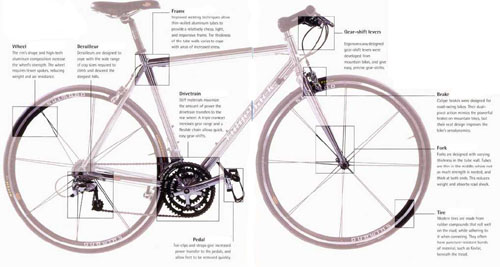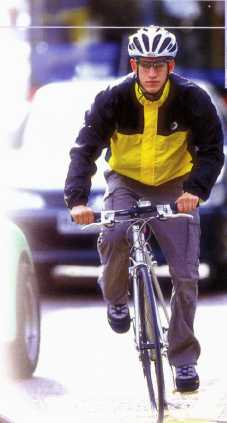
Above: A Hybrid bike: Advances in technology have refined the
design and improved the performance of each category of bike part, producing
a machine that's easy to ride and maintain. (Hover over discription labels
for text. Click here
for large-sized view.)
 Modern bikes, such as the hybrid bike (image above), are designed to
be light and user-friendly. The parts can be grouped into different categories,
each performing a key function in the overall operation of the bike.
Modern bikes, such as the hybrid bike (image above), are designed to
be light and user-friendly. The parts can be grouped into different categories,
each performing a key function in the overall operation of the bike.
The frame is the skeleton of the bike, onto which all components are fitted. The fork holds the front wheel, and connects to the handlebar to allow the bike to be steered. The drivetrain is the system that transfers the rider’s energy, via the pedals and crankarms, to the rear wheel. It also contains a number of toothed wheels, known as chainrings and cogs, which carry the chain.
The derailleurs change the bike’s gears by moving the chain onto different chainrings and cogs. Derailleurs are controlled by the gear-shift levers, which are mounted on the handlebar to allow quick and easy use by the rider. The brakes are controlled by brake levers that are also mounted on the handlebar, and use brake pads to press against the wheel’s rim to bring the bike to a stop.
The modern bike is a high-tech machine: Many years of design refinement have produced an adaptable hybrid bike, which combines technology from road and mountain bikes for use in an urban environment.